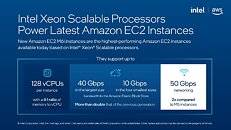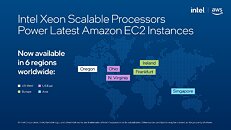
AMD Details New EPYC CPUs, Next-Generation AMD Instinct Accelerator, and Networking Portfolio for Cloud and Enterprise
Today, at the "Data Center and AI Technology Premiere," AMD announced the products, strategy and ecosystem partners that will shape the future of computing, highlighting the next phase of data center innovation. AMD was joined on stage with executives from Amazon Web Services (AWS), Citadel, Hugging Face, Meta, Microsoft Azure and PyTorch to showcase the technological partnerships with industry leaders to bring the next generation of high performance CPU and AI accelerator solutions to market.
"Today, we took another significant step forward in our data center strategy as we expanded our 4th Gen EPYC processor family with new leadership solutions for cloud and technical computing workloads and announced new public instances and internal deployments with the largest cloud providers," said AMD Chair and CEO Dr. Lisa Su. "AI is the defining technology shaping the next generation of computing and the largest strategic growth opportunity for AMD. We are laser focused on accelerating the deployment of AMD AI platforms at scale in the data center, led by the launch of our Instinct MI300 accelerators planned for later this year and the growing ecosystem of enterprise-ready AI software optimized for our hardware."
"Today, we took another significant step forward in our data center strategy as we expanded our 4th Gen EPYC processor family with new leadership solutions for cloud and technical computing workloads and announced new public instances and internal deployments with the largest cloud providers," said AMD Chair and CEO Dr. Lisa Su. "AI is the defining technology shaping the next generation of computing and the largest strategic growth opportunity for AMD. We are laser focused on accelerating the deployment of AMD AI platforms at scale in the data center, led by the launch of our Instinct MI300 accelerators planned for later this year and the growing ecosystem of enterprise-ready AI software optimized for our hardware."










































